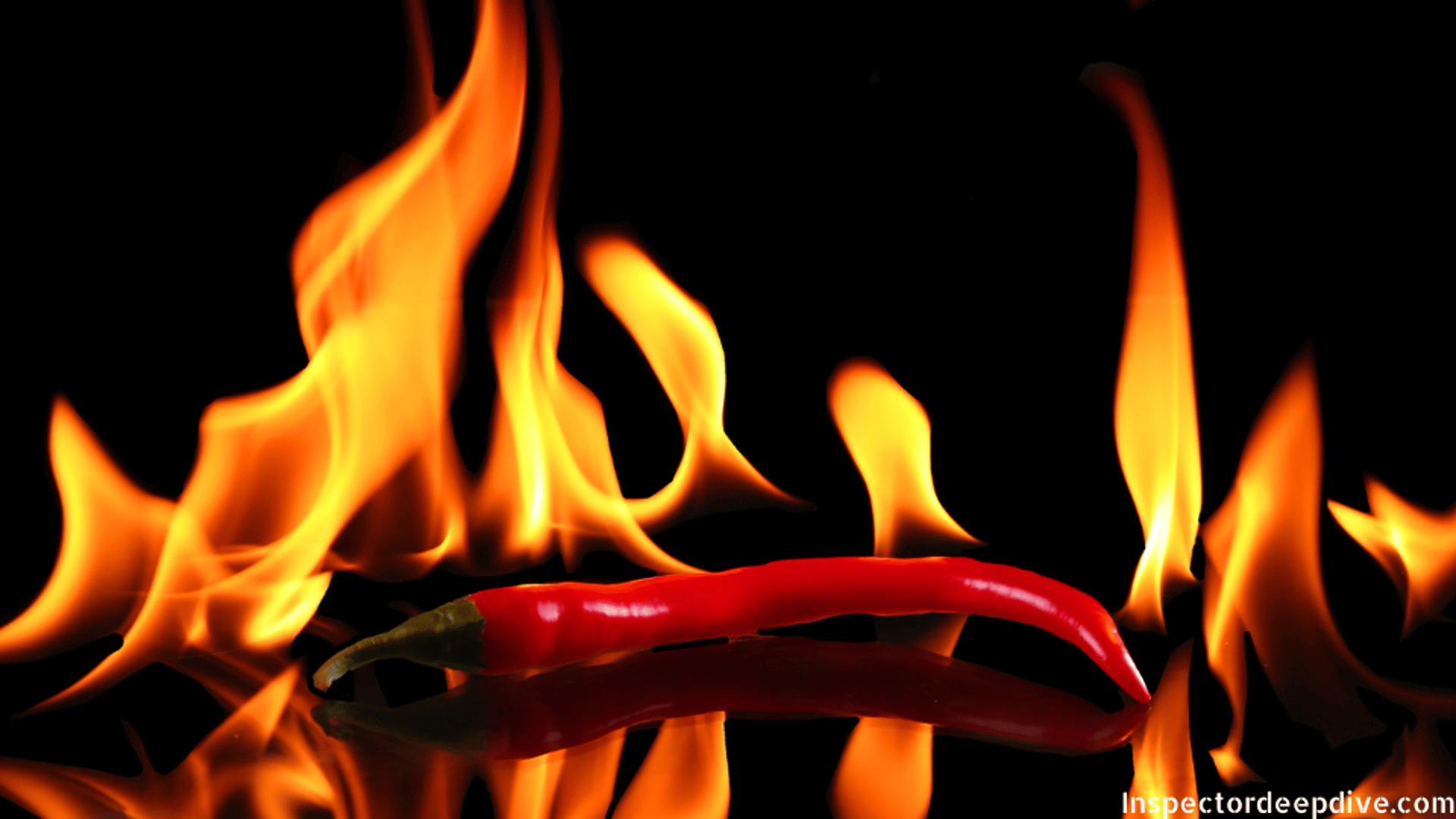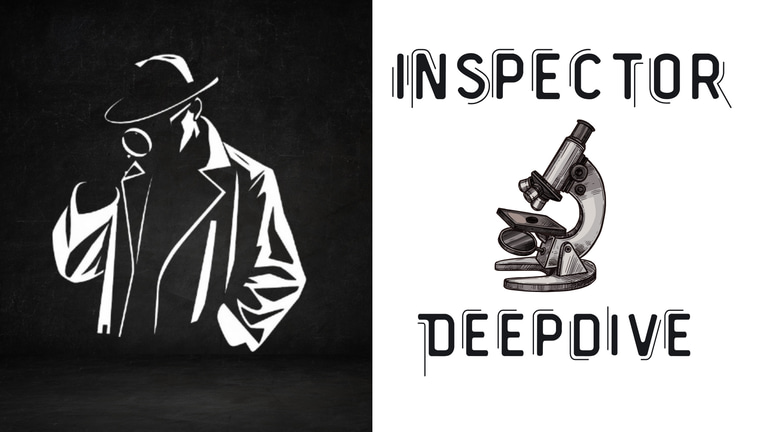Scoville Heat Scale: Complete Guide to Measuring Chili Pepper Spiciness

Scoville Heat Scale: Complete Guide to Measuring Chili Pepper Spiciness
What Is the Scoville Heat Scale?
The Scoville Heat Scale is a system used to quantify the spiciness (heat) of chili peppers and other capsaicin-containing foods. Developed in 1912 by American pharmacist Wilbur Scoville, it measures heat based on the concentration of capsaicin the active compound that triggers a burning sensation.
How Does the Scale Work?
Heat is measured in Scoville Heat Units (SHU), which represent how much a pepper’s extract must be diluted in sugar water until a panel of tasters can no longer detect heat.
Example: A pepper rated at 1,000 SHU must be diluted 1,000 times to become undetectably hot.
Modern testing: Today, (HPLC) High-Prformance Liquid Chromatography provides a more precise quantification of capsaicinoids, translating chemical measurements into SHU values.
Peppers on the Scoville Scale
Bell Pepper: 0 SHU no heat, mild flavor.
Poblano: 1,000–2,000 SHU mild warmth with earthy notes.
Jalapeño: 2,500–8,000 SHU moderate heat, versatile for cooking.
Serrano: 10,000–23,000 SHU hotter than jalapeños, with a sharp bite.
Cayenne: 30,000–50,000 SHU intense heat, commonly used in powdered form.
Thai Chili (Bird’s Eye): 50,000–100,000 SHU small but fiery, common in Asian cuisines.
Habanero: 100,000–350,000 SHU extremely hot with fruity undertones.
Chocolate Bhutlah: 1,500,000–2,000,000 SHU a cross involving Bhut Jolokia (Ghost Pepper), known for its dark brown color and lingering spiciness.
Carolina Reaper: 1,500,000–2,200,000 SHU long-renowned super-hot variety.
Dragon’s Breath: ~2,480,000 SHU (estimated) unveiled in 2017 and noted in 2025 for extreme heat and potential topical anesthetic applications.
Pepper X: 2,693,000–3,180,000 SHU as of 2025, recognized as the world’s hottest pepper, developed by Ed Currie (PuckerButt Pepper Company). It surpasses the Carolina Reaper’s previous record and sets a new benchmark for spiciness.
What Does This Mean for the Scoville Scale?
The Scoville Scale continues to stretch upward as breeders develop varieties with higher capsaicin concentrations. While the Carolina Reaper remains iconic, peppers like Pepper X and Dragon’s Breath have raised the ceiling on achievable heat. These super-hots are primarily grown for novelty, culinary experimentation, and scientific or industrial purposes rather than everyday eating.
Why Is the Scoville Scale Important?
It helps consumers and cooks choose peppers and spicy products that match their tolerance and culinary goals.
It standardizes heat levels across peppers, hot sauces, and capsaicin-containing snacks and products, aiding comparison and labeling.
Surprising Truths
The Scoville Scale isn’t limited to whole peppers. It also applies to any food or product containing capsaicin, including hot sauces, spice blends, and spicy snacks.
Best Ways to Use the Scoville Scale
Select peppers by desired heat for recipes, balancing flavor and burn.
Start with milder options (e.g., jalapeños), then gradually explore hotter varieties (e.g., habaneros, Bird’s Eye/Thai chilies) as your tolerance and technique improve.
Science Behind the Scale
Capsaicin binds to TRPV1 pain receptors in the mouth and on the skin, signaling heat and pain to the brain. The Scoville rating reflects how much capsaicin (and related capsaicinoids) is present in a pepper or product, which determines its SHU score and perceived burn.
FAQs: How Spicy Foods Affect the Body
Increased Heart Rate
Capsaicin can stimulate adrenaline release, temporarily increasing heart rate. This “fight or flight” response may feel intense but usually subsides quickly.
Blood Pressure Changes
Spicy foods can cause a short-term rise in blood pressure due to the body’s stress response to heat. Individuals with hypertension or cardiovascular conditions should exercise caution.
Gastrointestinal Stress
Very hot chilies can irritate the GI tract, potentially causing nausea, vomiting, or acid reflux. In rare cases, severe vomiting can strain the body, including the heart, particularly in vulnerable individuals.
Heart Palpitations
Some people experience palpitations or irregular heartbeats after consuming extremely spicy foods. These are typically transient but can be concerning for those with underlying heart issues.
Who Should Be Cautious?
Individuals with heart disease, high blood pressure, or a history of cardiovascular problems should avoid consuming super-hot chilies in large amounts.
People with gastrointestinal disorders (e.g., GERD, ulcers) may experience worsened symptoms after eating very spicy foods.
Can Spicy Foods Cause a Heart Attack?
There is no direct evidence that eating super-hot chilies causes heart attacks in otherwise healthy individuals. However, in people already at risk, spicy foods can act as a trigger:
The combination of elevated heart rate, temporary blood pressure spikes, and physical stress from extreme heat may exacerbate existing heart conditions.
Rare but severe reactions have been reported, including esophageal rupture from forceful vomiting and coronary spasms. These events are uncommon but underscore the need for caution in high-risk individuals.
Key Takeaways
SHU quantifies capsaicin-driven heat; modern HPLC methods make measurements more precise.
Pepper X currently sets the upper boundary of recorded heat, eclipsing the Carolina Reaper.
Use the Scoville Scale to match pepper heat to your tolerance and recipe needs.
Capsaicin’s effects are usually temporary but can be risky for those with cardiovascular or gastrointestinal vulnerabilities.
info@inspectordeepdive.com
© 2025 food.InspectorDeepDive.com. All rights reserved. Content may not be copied or republished without permission.
This article is for informational purposes only. InspectorDeepDive.com does not provide medical advice. Always consult a licensed healthcare provider before making dietary or health decisions.
